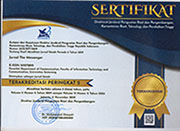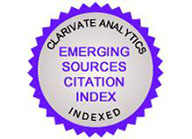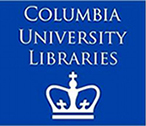Challenges of Dissemination of Islam-related Information for Chinese Muslims in China
Abstract
This article provided a historical background of the challenges faced in the course of Islamic education of Chinese Muslims in the context of social change. The researcher historically evaluated how social change reshaped the Islamic education of Chinese Muslims, and highlighted the influence of technical developmentonIslamic education in contemporary China. The available research indicated thatsince the 1980s, the challenges faced in the course of Islamic education of Chinese Muslims have gradually shifted from political repercussions to technological development. Due to the limited literature, the researcher called for more research on new media development, especially social mediaand Muslim minority groups in China. The researcher also proposed a research agenda for future studies.
Keywords
Full Text:
PDFReferences
All ¨s, E. (2006). Muslim Religious Education in China. China Perspectives [Online], January-February 2003. Online since 23 November 2006, connection on 07 May 2017, from http://chinaperspectives.revues.org/230
Armijo, J. (2008). Chinese Madrasas and Linkages to Islamic Schools Abroad. The Madrasa in Asia: Political Activism and Transnational Linkages. Farish A. Noor, Yoginder Sikand & Martin van Bruinessen (eds). Amsterdam: ISIM/Amsterdam University Press
Bai, S.Y. (1996). Biographies of the Historic Figures from the Hui Ethnic Group. The Qing Dynasty. Vol. 33.
Chan, K.K. (2004). China's Socioeconomic Changes and the Implications for the Religion-State Dynamic in China. BYU Law Review, 2004 (2), Article 2.
Chinese Islamic Institution. (2015). The New Number and distribution of Mosque in China 2015. Retrieved on 2nd, July, 2017 from http://www.chinaislam.net.cn/cms/news/media/201503/03-8001.html
Cook, B.J. (2001). Islam and Egyptian Higher Education: Student Attitudes. Comparative Education Review, 45 (3) (August 2001), 379-411.
Cui, B.G. (2013). 2013 Blue book of Chinese Media. Beijing: Social Sciences Academic Press.
Ding, K.J. & Yu, T. (2001). A Study on the Historical Relationship Between sufism and Mosque education in China. Nï¼ Wï¼ Minorities Research. 2001 (3), Total Noï¼ 30.
Elwell-Sutton, L., Arafat, W.N. & Isserlin, B.S.J. (1980). Middle Eastern Studies in British Universities and Work in Progress. Bulletin (British Society for Middle Eastern Studies), 7 (1) (1980), 55-57.
Fataar, A. (2005). Discourse, Differentiation, and Agency: Muslim Community Schools in Postapartheid Cape Town. Comparative Education Review, 49 (1) (February 2005), 23-43.
FitzGerald, C.P. (1967). Religion and China s Cultural Revolution. Pacific Affairs, 40 (1/2) (Spring-Summer, 1967), 124-129.
Gladney, D.C. (1987). Muslim Tombs and Ethnic Folklore: Charters for Hui Identity. The Journal of Asian Studies, 46 (3) (Aug., 1987), 495-532.
Ha, B.Y. (2013). JING XUE XI ZHUAN PU and Sharia Law. Studies in World Religions, 2013 (5), 126-135.
Hatab, W.A. (2016). Islam and Social Media: Attitudes and Views. Asian Social Science, 12 (5).
Herrera, L. (2004). Review: Education, Islam, and Modernity: Beyond Westernization and Centralization. Reviewed Work(s): Imperial Classroom: Islam, the State, and Education in the Late Ottoman Empire by Benjamin C. Fortna; The Modernization of Public Education in the Ottoman Empire, 1839 1908: Islamization, Autocracy, and Discipline by Selcuk Aksin Somel; Education, Religion, and the Discourse of Cultural Reform in Qajar Iran by Monica Ringer. Comparative Education Review, 48 (3) (August 2004), 318-326.
Houtsonen, J. (1994). Traditional Quranic Education in a Southern Moroccan Village. International Journal of Middle East Studies, 26 (3) (Aug., 1994), 489-500.
Hu, Zh. H. (1993). The Hui Nationality in China. Yin Chuan: Ningxia people's Publishing House.
Israeli, R. (2012). Islam in China. Politics and Religion in Contemporary China, VI (2/2012), 251-268.
Latham, J.D. & Derek Hopwood, D. (1983). Middle Eastern Studies in British Universities and Work in Progress. Bulletin (British Society for Middle Eastern Studies), 10 (1), 71-75
Li, X.Y. (2008). Analysis the Social Network construction of Hui From Educational Perspective. Journal of Tianshui Normal University, 28 (3), May, 2008
Li, L.A. (2017). The Religious Media are of Great Responsibility in Modern China. Retrieved on 8th, May, 2017, from: http://fo.ifeng.com/a/20170315/44554416_0.shtml
Liu, J.J. (2014). On Mosque education of the Hui Nationality in the Ming and Qing Dynasties. Journal Of Ningbo University (Educational Science Edition), 36 (1).
Li, N. (2013) Rethinking the Contemporary Islamic Education of Hui. Journal of the Central Institute of Socialism, 185 (5).
Livingston, J. M. (1996) Western Science and Educational Reform in the Thought of Shaykh Rifaa al-Tahtawi. International Journal of Middle East Studies, 28 (4/Nov., 1996), 543-564.
Lukens-Bull, R. A. (2001). Two Sides of the Same Coin: Modernity and Tradition in Islamic Education in Indonesia. Anthropology & Education Quarterly, 32(3), 350-372.
Luo, J. (2015). Media System in China: a Chinese Perspective. Int. Commun. Chin. Cult., 2 (1), 49 67.
Ma, M.L. (1996). The formation and lessons of Modern New Education of Ethnic Hui and Salar. Journal Northwest Minorities University (Social Science), 2.
Ma, H. P. (2004). The Choice Faced by the Education of Hui Nationality in Modern Times. Guizhou Ethnic Studies, 24 (Genera1 Noï¼ 98).
Ma, J. (2009). Imam Ma Shan Ting in the Religious Dialogue. The Religious Cultures in the World, 1, 14-17.
Ma, X. J. (2012). An Elaboration of the Hui Mosque education in Helnan. Journal of Beifang University of Nationalities, 2 (Gen. No. 104).
Ma, X. F. (2012). Muslim Communities in Kunming:1274--2000. N.W. Journal of Ethnology, 1 (Total No. 72).
McLoughlin, C., & Lee, J. W. M. (2010). Personalised and self regulated learning in the Web 2.0 era: International exemplars of innovative pedagogy using social software. Australasian Journal of Educational Technology, 26 (1), 28-43.
Mehran, G. (2003). The Paradox of Tradition and Modernity in Female Education in the Islamic Republic of Iran. Comparative Education Review, 47 (3, August 2003), 269-286.
Milligan, J.A. (2003). Teaching between the Cross and the Crescent Moon: Islamic Identity, Postcoloniality, and Public Education in the Southern Philippines. Comparative Education Review, 47 (4, November 2003), 468-492.
Ning, W. (1985). From Mosque education to New Education Form of Hui--the Huge transformation of the Hui Education History. Social Sciences in Ningxia, 1, 27-29.
Parker, L. & Raihani, R. (2011) Democratizing Indonesia through Education? Community Participation in Islamic Schooling. Educational Management Administration & Leadership, 39 (6), 712 732.
Pohl, F. (2011). Negotiating Religious and National Identities in Contemporary Indonesian Islamic Education. Cross Current, September, 2011, 399-414.
Robinson, F. (1993). Technology and Religious Change: Islam and the Impact of Print. Modern Asian Studies, 27 (1), Special Issue: How Social, Political and Cultural Information Is Collected, Defined, Used and Analyzed (Feb., 1993), 229-251.
Tsang, M.C. (2000). Education and National development in China since 1949: Oscillating Policies and Enduring Dilemmas. China Review.
Waghid, Y. & Smeyers, P. (2014). Re-envisioning the Future: Democratic Citizenship Education and Islamic Education. Journal of Philosophy of Education, 48 (4), 539-558.
Wang, W., Wise, C. Baric, T., Black, M. L. & Bittles, A.H. (2003). The origins and genetic structure of three co-resident Chinese Muslim populations: the Salar, Bo an and Dongxiang. Hum Genet, 113: 244-252.
Wan, ZH. X. & Li, Q. (2005). Investigation of Mosque education in Lanzhou. Studies in World Religions, 2, 104-111.
Wen, F. & Gao, Sh. G. (2014). On Evolution and Characteristies of Ningxia Hui Mosque education in Modern Times. Journal of Chengdu Normal University, 30 (10).
Xu, B. (2014). Media Censorship in China. Council on Foreign Relations. September 25, 2014. Retrieved on 13 May, 2017 from http://www.cfr.org/china/media-censorship-china/p11515
Xinhua. (2017). China Issues Regulation on Online News Service. Xinhuanet. May 3, 2017. Retrieved on 2nd October, 2017 from http://news.xinhuanet.com/english/2017-05/03/c_136251798.htm
DOI: http://dx.doi.org/10.26623/themessenger.v10i1.767
Refbacks
- There are currently no refbacks.
Copyright (c) 2018 Jurnal The Messenger
View My Stats [Jurnal The Messenger] is an International Scientific Journal, Published by the Department of Communication, Faculty of Information Technology and Communication, Universitas Semarang (Central Java, Indonesia). It is licensed under a Creative Commons Attribution 4.0 International License.



_11.jpg)




_BARCODE.jpg)
_BARCODE1.jpg)



5.png)










2.png)





